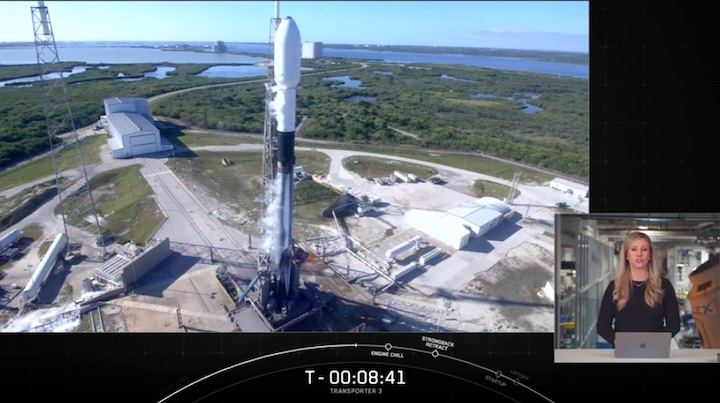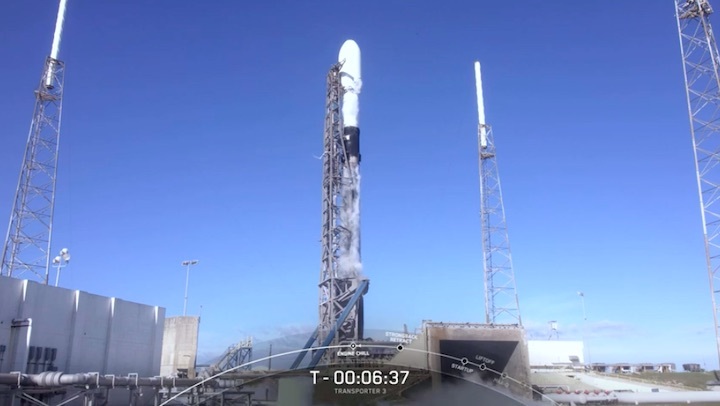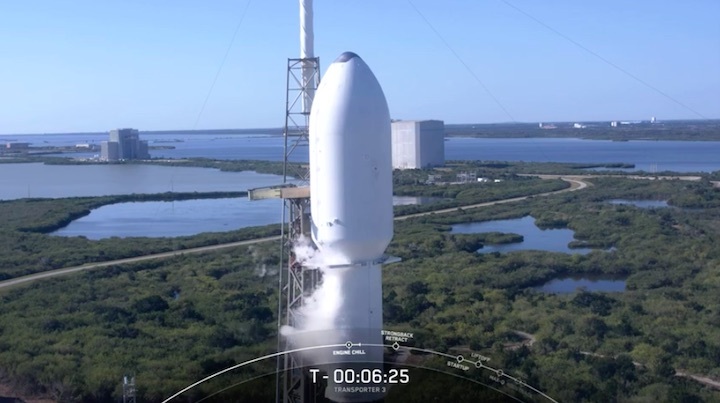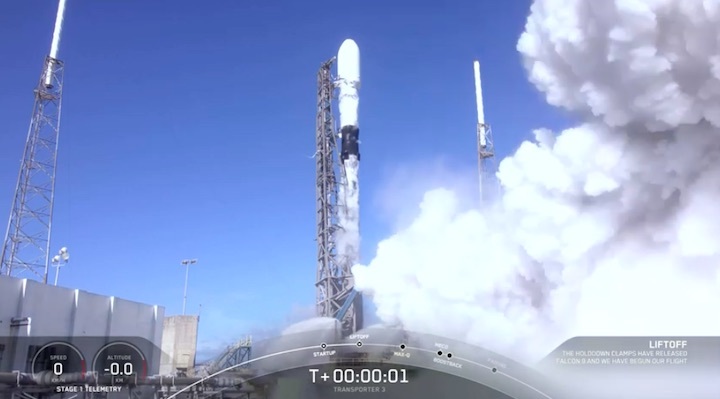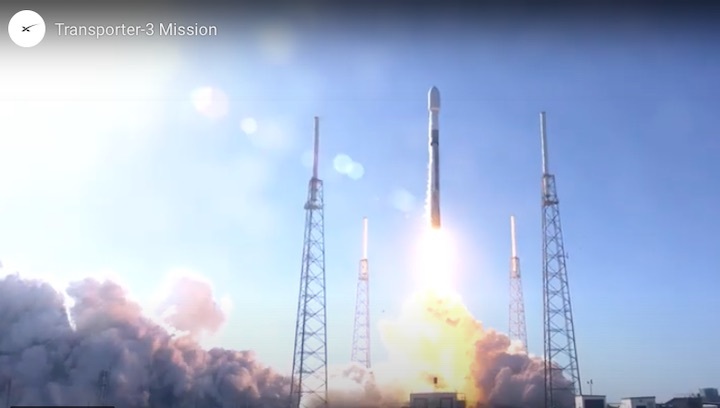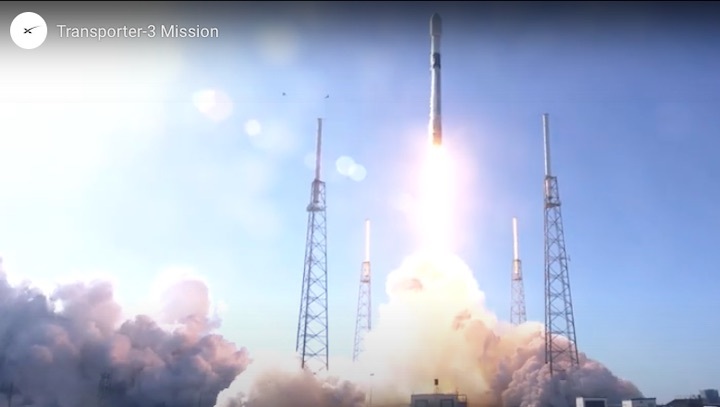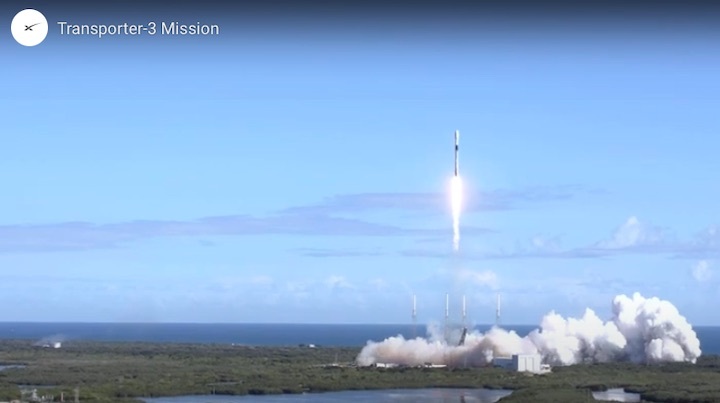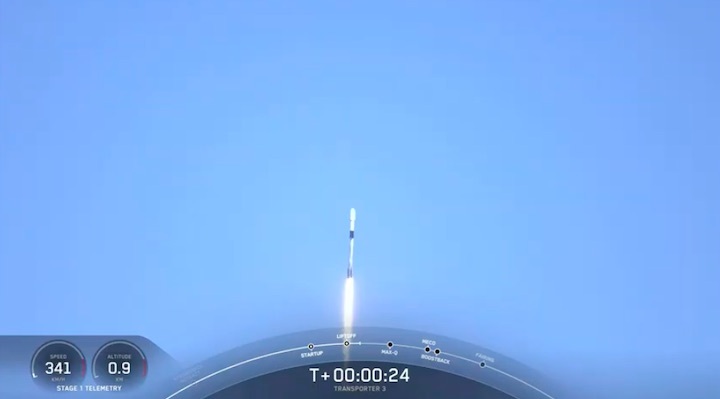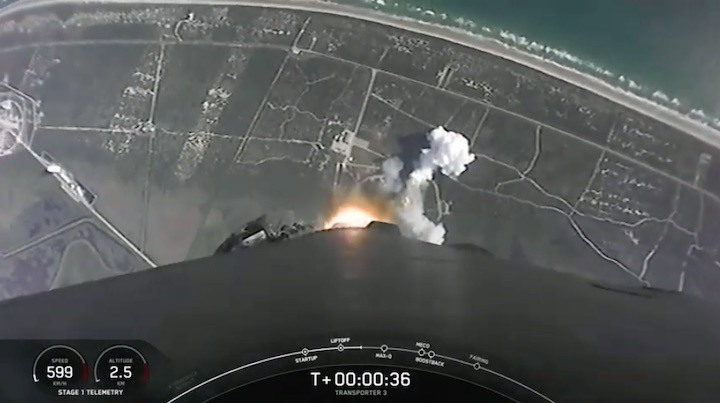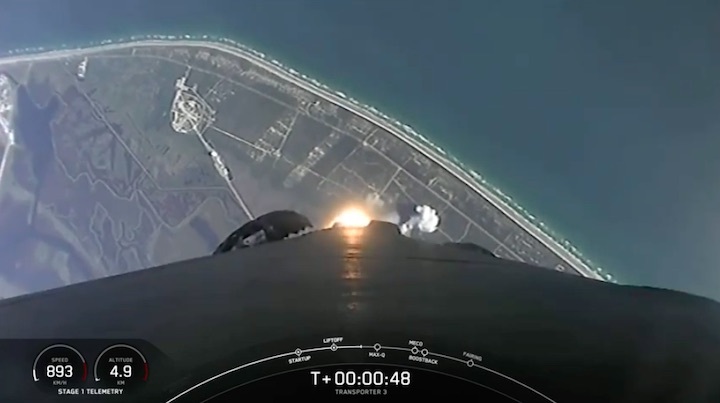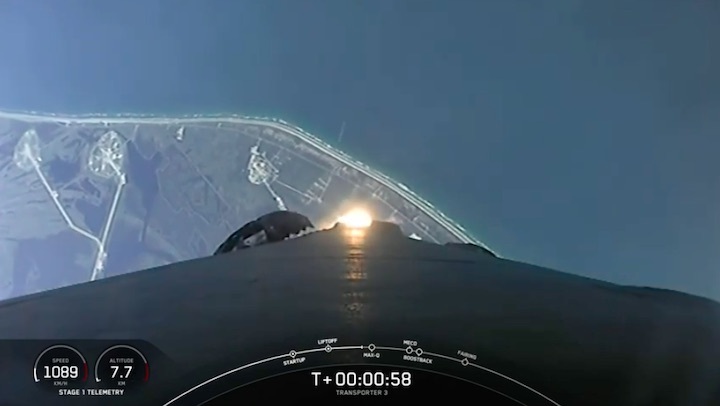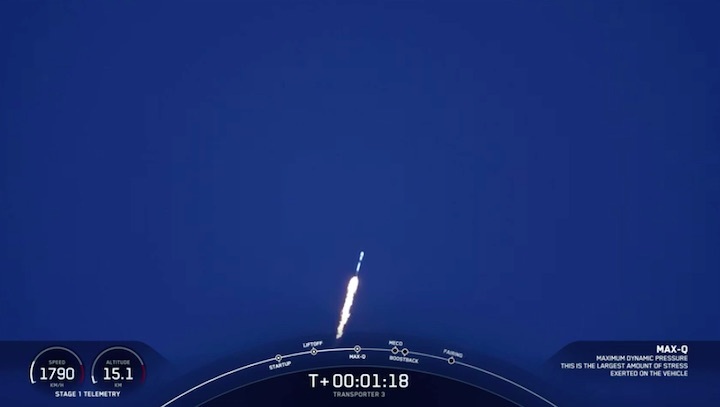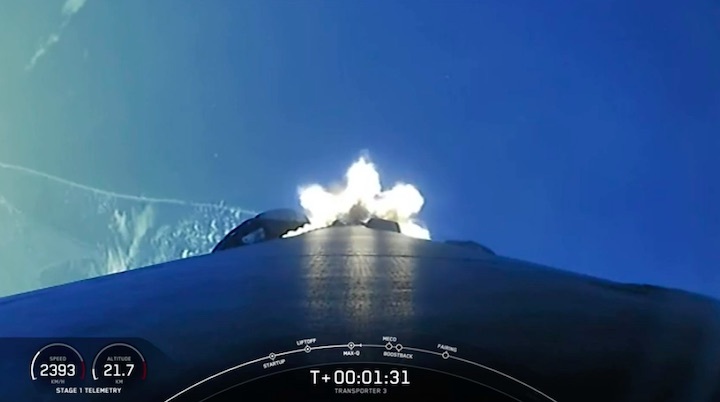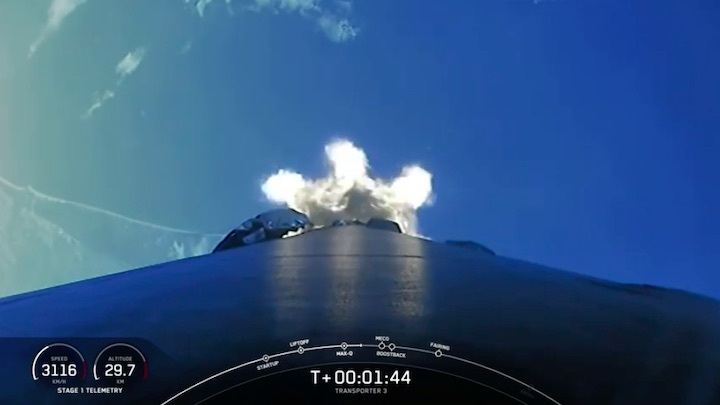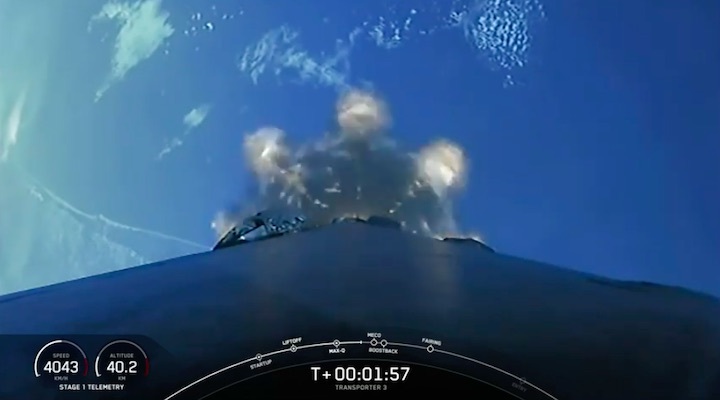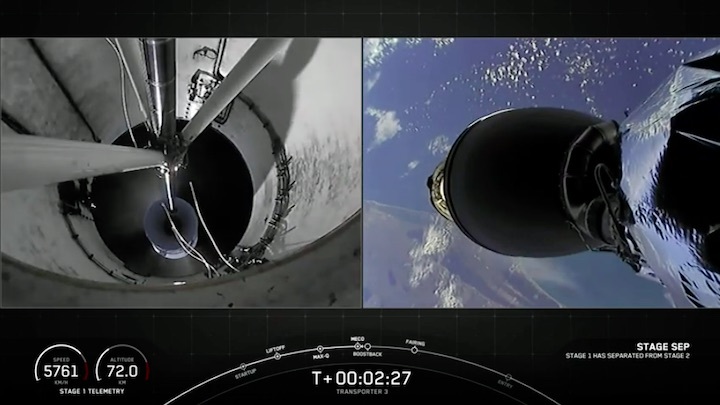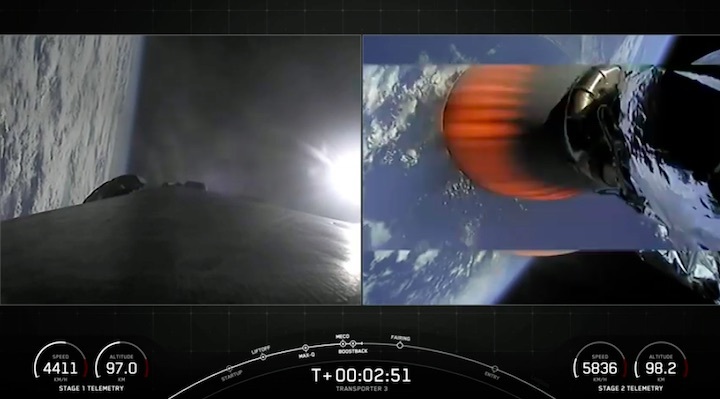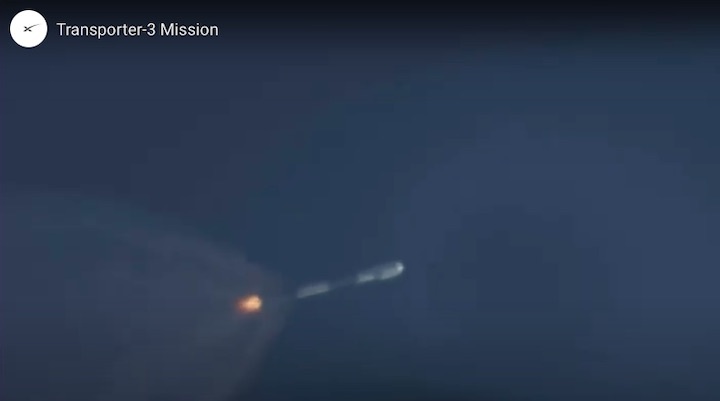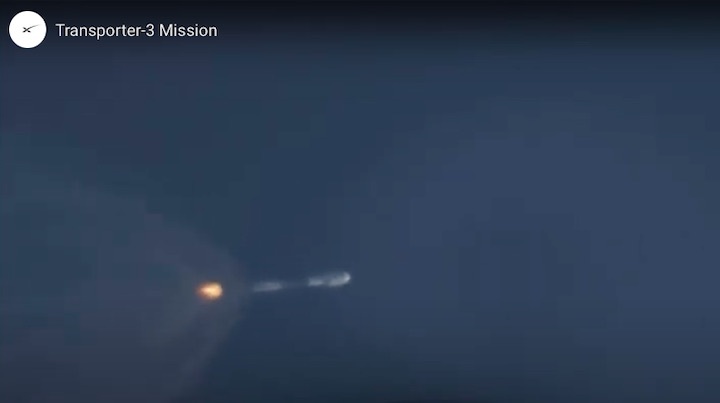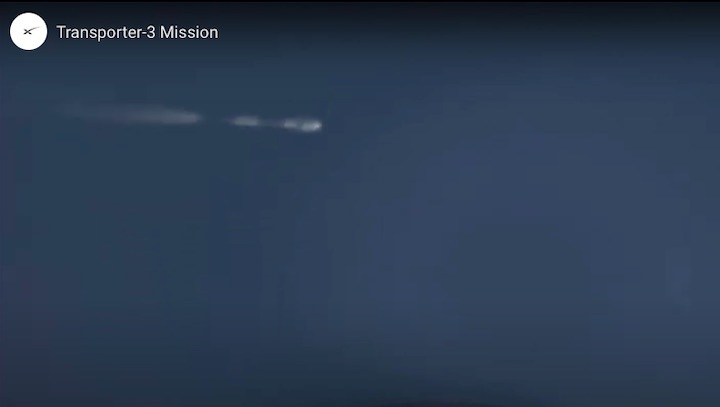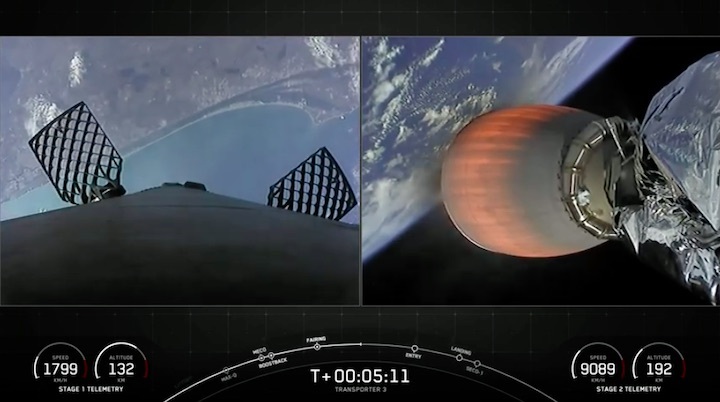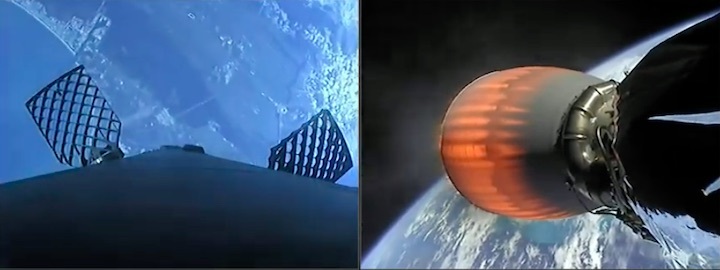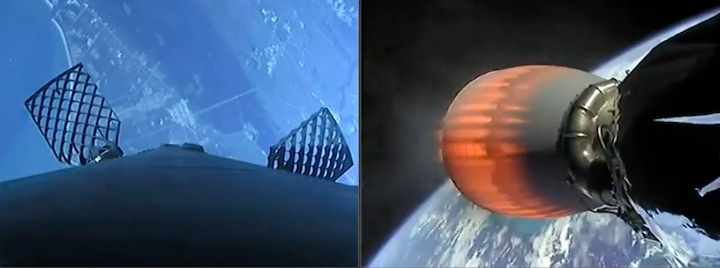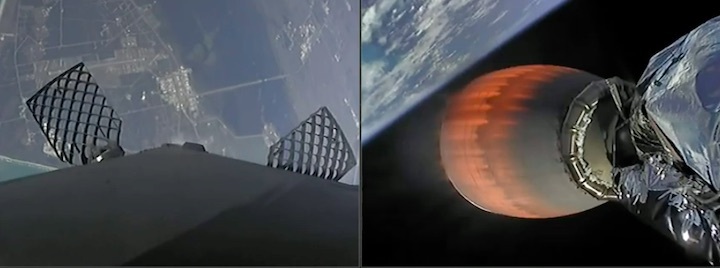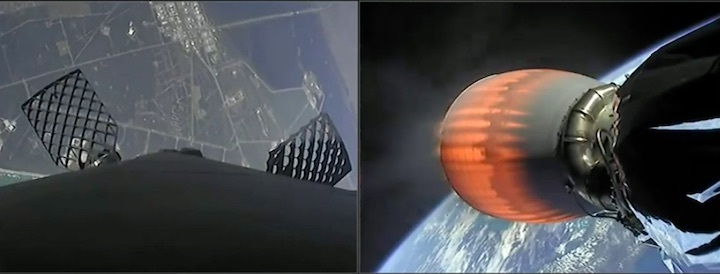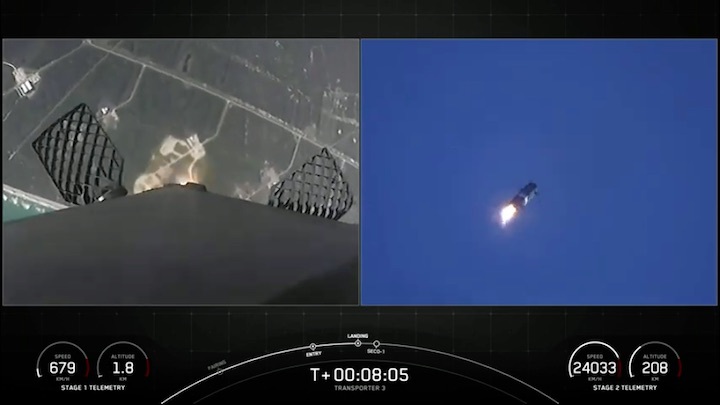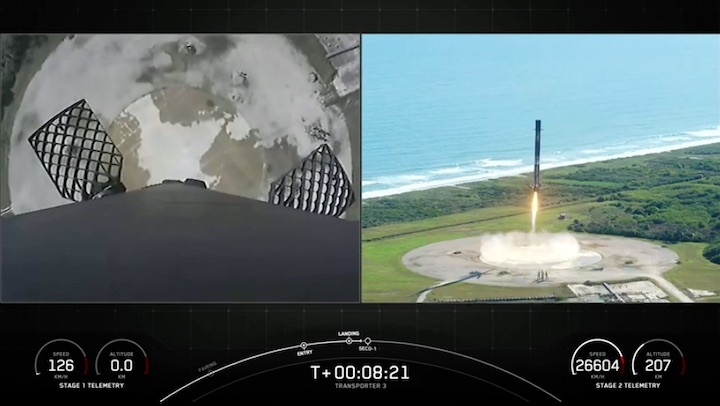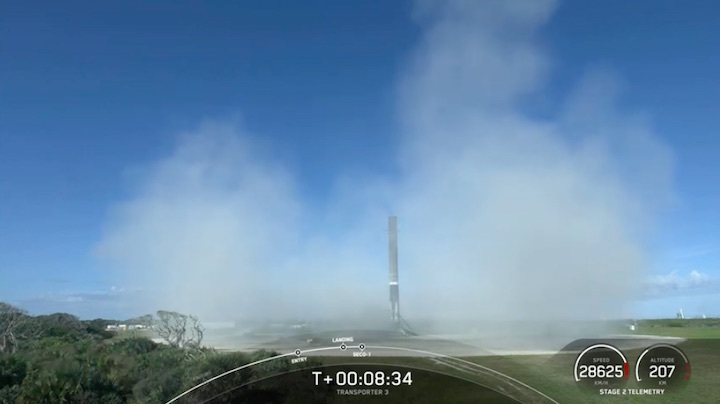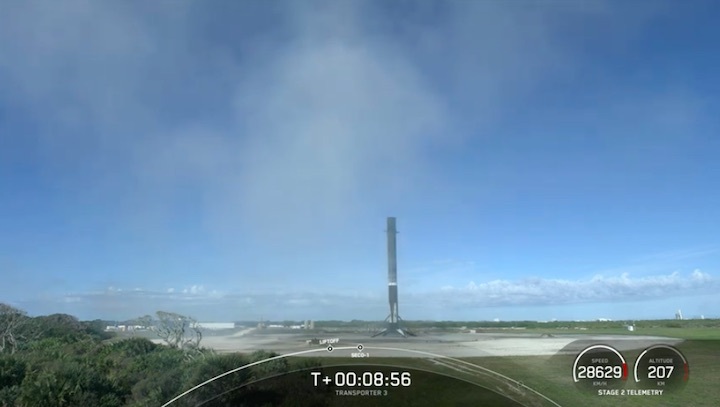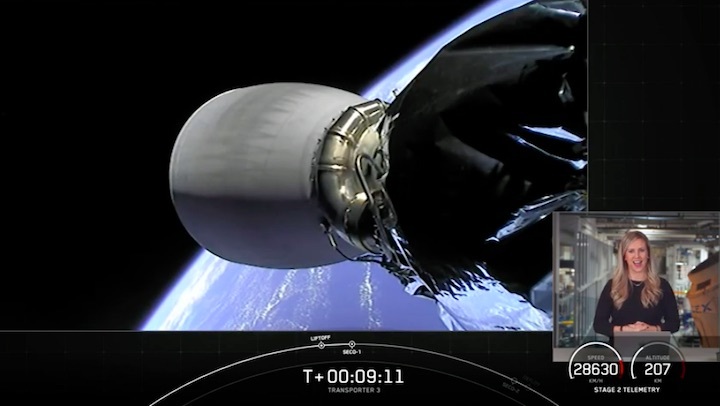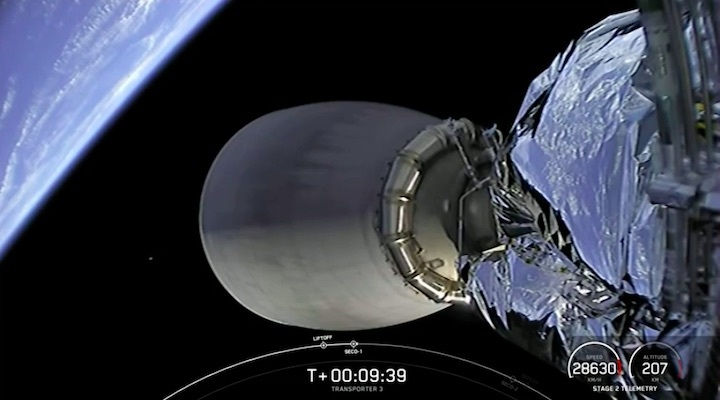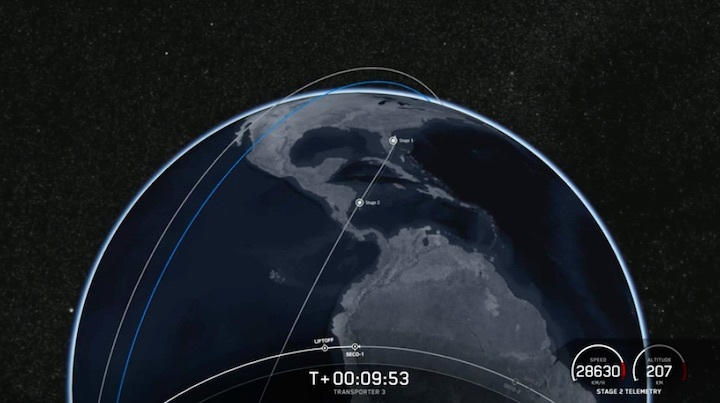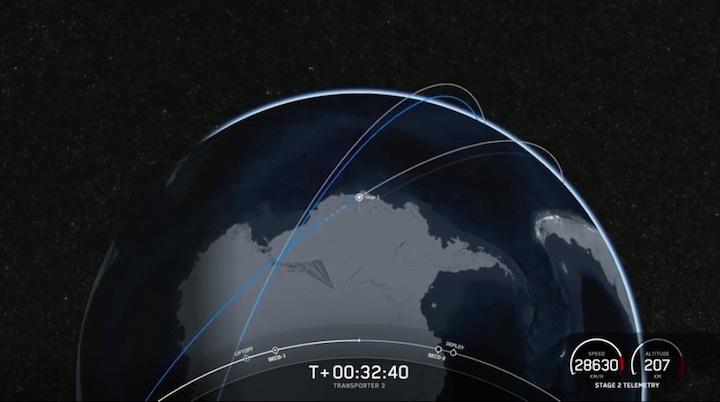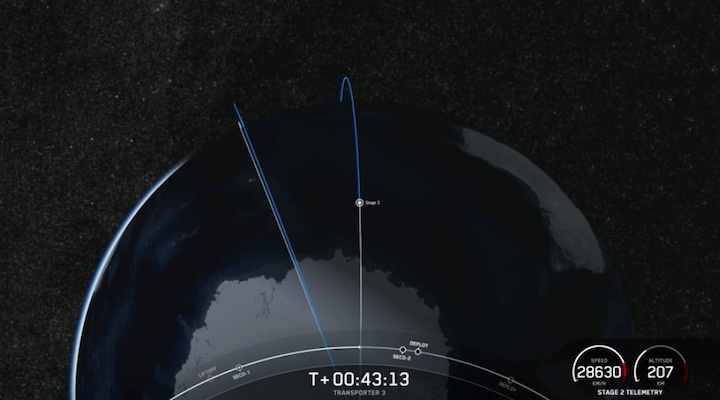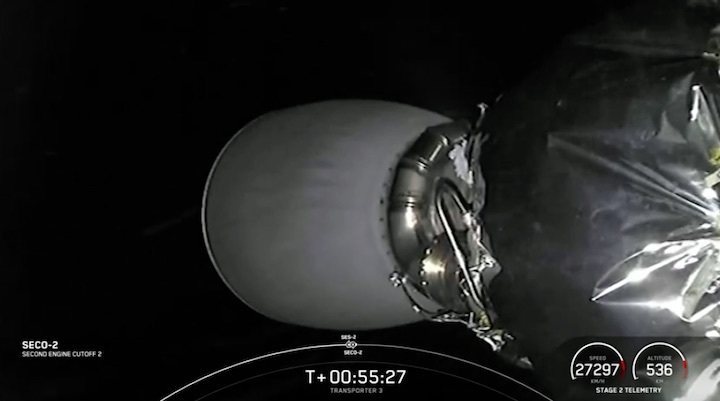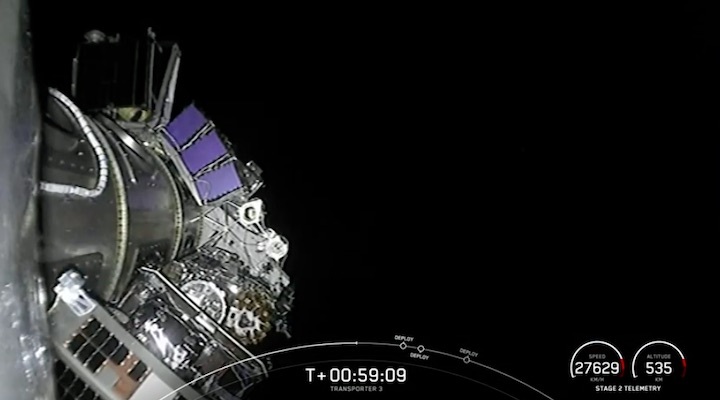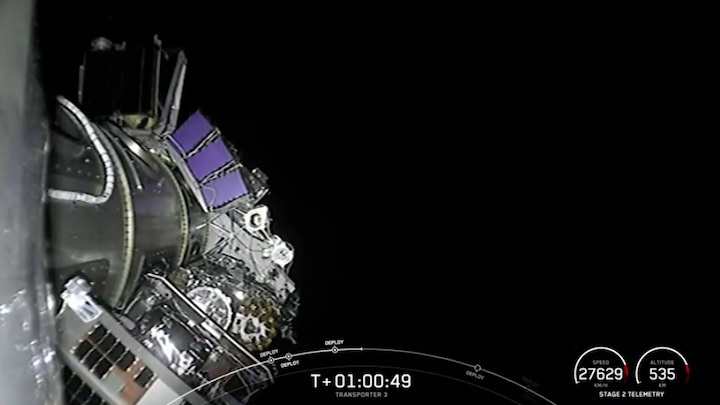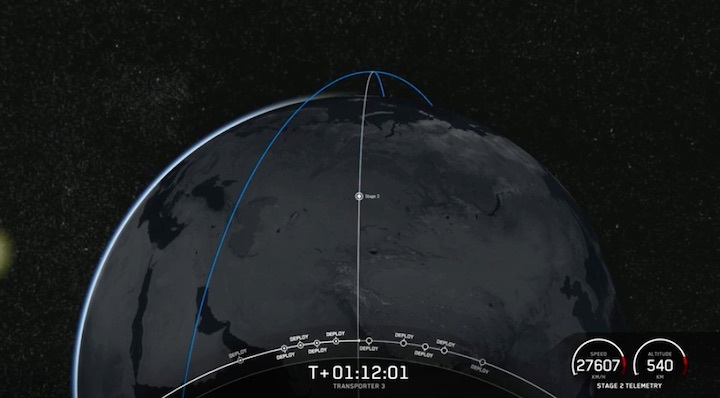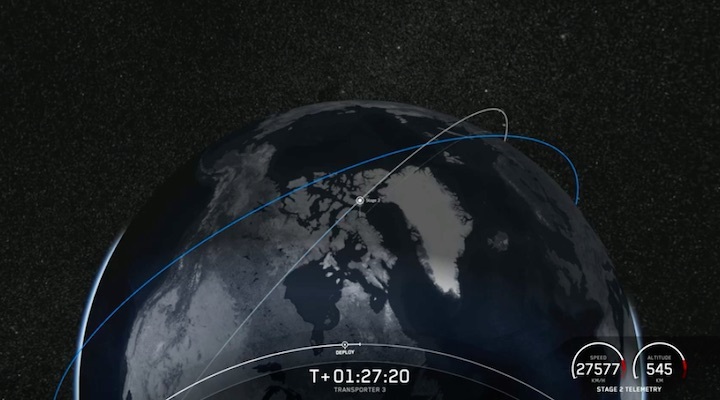13.01.2022
SpaceX set for Transporter-3 launch and sonic boom-generating Cape Canaveral landing
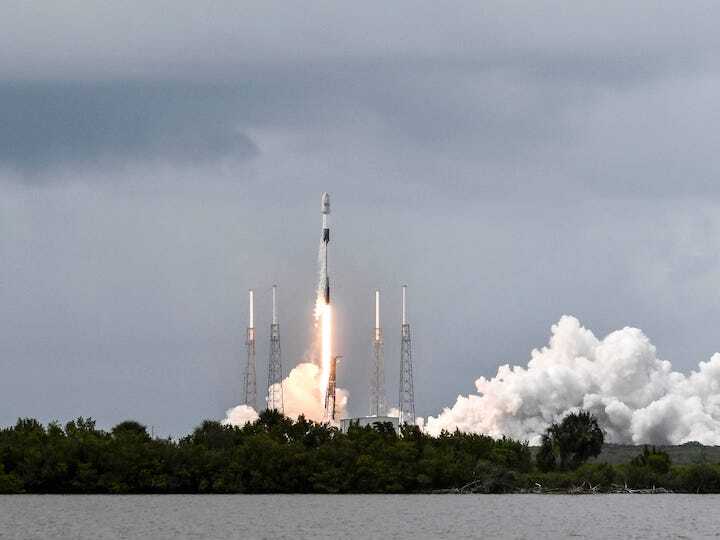
SpaceX is set to host its next Space Coast launch Thursday and residents should be prepared for what comes after: sonic booms generated by the Falcon 9 rocket's first stage as it lands at Cape Canaveral Space Force Station.
Just under 10 minutes after its 10:25 a.m. liftoff from Launch Complex 40, the 162-foot booster will generate window-rattling sonic booms as it travels faster than the speed of sound en route to Landing Zone 1. It will then fire at least one of its Merlin main engines during the landing burn to slow down over the pad and touch down near the eastern tip of Cape.
The window for Thursday's attempt runs 29 minutes until 10:54 a.m. ET.
Sonic booms from Falcon landings have been heard as far as Tampa, though much of that depends on each mission's trajectory and local weather. Thursday's launch, a group of payloads for several customers labeled Transporter-3, will fly a rare southerly trajectory after liftoff, so the booster will approach from the south and generate booms along that path.
Transporter missions allow several customers to split the cost of a sub-$50 million Falcon 9 flight to orbit, but all payloads have to fly to similar locations. For more refined orbits, customers can choose smaller launch providers or wait for a Transporter mission that flies along the desired trajectory.
Experts caution that sonic booms can be startling, but they have only caused damage under extremely rare circumstances. They were most prevalent during the space shuttle days when orbiters returning to land at Kennedy Space Center would generate far-reaching double booms.
Local landings at the Cape used to be more common in the early days of the Falcon program – in fact, the rocket's first successful landing in December 2015 was hosted at Landing Zone 1. The last time the Space Coast saw a land-based booster recovery was for the previous Transporter mission in June 2021.
More often, boosters land on drone ships in the Atlantic Ocean. But some missions, such as Thursday's, leave enough fuel in the booster for it to fly back to the Cape.
Weather for Thursday's attempt, meanwhile, was calculated by local Space Force forecasters at 70% "go." Upper-level winds, booster landing weather, and solar flare activity are not factored into the percentage, but all were classified as "low-risk."
"The bulk of any precipitation and cloud cover still looks to transit east of the spaceport by the primary launch opportunity Thursday morning though the mid-level clouds may be harder to scour out," Space Launch Delta 45 forecasters said Tuesday. "The primary concern for a Thursday morning launch attempt will be for thick clouds and cumulus clouds."
Launch Thursday, Jan. 13
- Rocket: SpaceX Falcon 9
- Mission: Transporter-3 group of payloads
- Launch Time: 10:25 a.m. ET
- Launch Window: To 10:54 a.m. ET
- Launch Complex: 40 at Cape Canaveral Space Force Station
- Trajectory: South
- Landing: Landing Zone 1 at Cape Canaveral Space Force Station
- Weather: 70% "go"
Quelle: Florida Today
+++
It's Launch Day! What you need to know about today's SpaceX Transporter-3 launch
It's Launch Day!
Here's what you need to know for today's SpaceX Transporter-3 launch from Cape Canaveral Space Force Station:
• Liftoff is set for 10:25 a.m. The window will remain open for 29 minutes - or until 10:54 a.m.
• Weather forecast is 70% "go" at the launch pad.
• Upper-level winds above the pad and conditions for a ground landing at Cape Canaveral Space Force Station were both classified as "low-risk."
• The Falcon 9 rocket's first stage will produce sonic booms as it lands.

